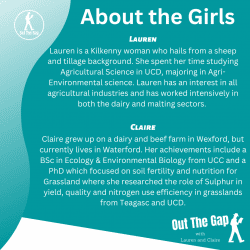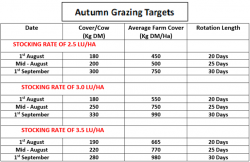Out The Gap – Issue 8


Changing Season
With the fertiliser register coming into effect by the 1st of the September changes are looming (see previous issue of Out The Gap which covered this). Schools back to the grind, the cool evenings setting in and the GAA championship well under way means only one thing, our grazing management style also needs to change. Focus now turns to autumn grazing management.
The aim of autumn grazing is to increase the number of days at grass, and animal performance whilst the weather still allows. During the final rotation, we also want to set the farm up to grow enough grass over winter to provide that very critical spring grass for the following year. Grass growth is still above demand but has slowed since last week.
It is hugely important to have a grass bank available to extend the grazing season. For farms with early turnout potential, closing the platform with sufficient grass will also achieve early turnout next spring. By now, September 1st, the rotation should be out to 30 days. Once we get beyond mid-September, we are essentially at the beginning of the next grazing year and therefore, what happens on farm over the next two months will influence the grass available next spring.
Grass10 newsletter, 2023.
To avoid losing grass over the winter, results of dead material from poor grass utilisation in the final rotation, good grazing management is now critical. Good clean-out of swards now will make it easier to achieve adequate residuals for the last rotation. Depending on your stocking rate, your farm covers targets will differ. If highly stocked, you will have a big demand for grass next spring, and will therefore need to close a bit sooner. Generally the aim for the end of September is to have an average farm cover of 1100 -1200 kg DM/ha.
Another factor that will allow for longer grazing times in the autumn and earlier turnout is overall soil health. When soils are deemed to be ‘healthy’, there is an increase capability of the soil for improved water infiltration and soil aeration, reducing runoff, water holding capacity, maintaining good structure, and good soil porosity. There are three pillars of soil health; biological, physical and chemical. The biological pillar looks at the biological activity in the soil and can be described as the ‘engine of the soil’.
The presence and abundance of earthworms is a useful and easily identifiable soil biological indicator. For the physical pillar, the soil structure is a key factor that supports all other soil functions. The chemical pillar looks at key factors such as soil pH and organic matter as they regulate nutrient availability in soils. Overall, looking at and improving all three pillars will improve soil resilience, productivity and nutrient use efficiency.
The last day (September 14th) for spreading nitrogen and phosphorus fertiliser is fast approaching. However, this deadline only applies to two of the big three fertiliser nutrients. Potassium (K) or potash, is a significant nutrient in grassland systems. Potassium is a key nutrient for maintaining water balance and chlorophyll levels in plants, increases tolerance to foliar diseases and plays a role in activating 60 plant enzymes for plant growth. Ultimately, without adequate K, grass doesn’t grow well. It is required in high quantities especially in silage ground as with silage harvested, all the K is removed.
Grazing is not as severe on K been removed from the field as animals return 90% of K out in their dung and urine. However, if there isn’t adequate K there in first place, they will struggle to recycle it. Focus on extending the grazing’s, cleaning out paddocks and spreading K now while conditions allow.
Happy grass building folks!


